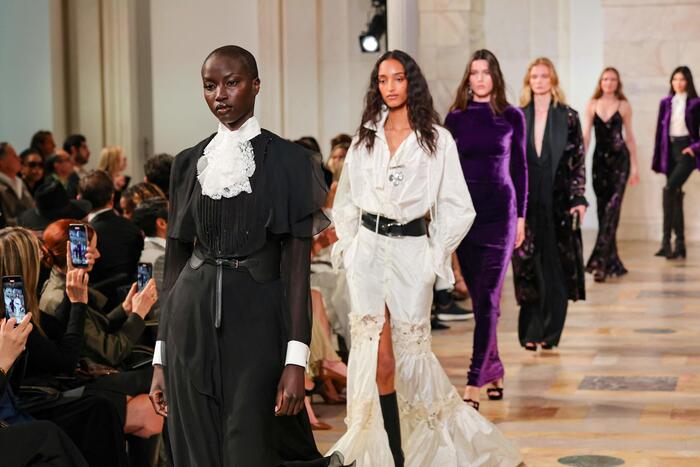The luxury market continues to navigate through a complex period, with major brands adopting distinct strategies to address global economic challenges. On one side, Ralph Lauren has announced new price increases for 2025 and spring 2026; on the other, Chanel has opted to slow down its price hikes after experiencing a decline in sales.
The American brand explained that its price adjustments stem from two main factors: strong demand from an expanding luxury consumer base that is less sensitive to cost, and the need to offset the impact of new tariffs imposed by the Trump administration in recent months. These tariffs have driven up import costs, prompting Ralph Lauren to revise its pricing to maintain healthy profit margins.
This move is part of a broader strategy to reinforce the brand’s luxury positioning and attract a younger audience that values quality and style but is less affected by price fluctuations. Recent financial results have been solid: in the last quarter, Ralph Lauren reported an 8% increase in revenue and net earnings exceeding $129 million, indicating that consumers continue to recognize the brand’s value.
Behind this success lies meticulous attention to premium fabrics, artisanal craftsmanship, and iconic designs—elements that have long defined Ralph Lauren’s aesthetic. Despite the recent decline in cotton prices, new tariffs have forced the company to reorganize its supply chain. Reducing reliance on China—currently responsible for about 12% of production—and shifting part of its manufacturing to other countries are key moves to mitigate the impact of tariffs without compromising quality.
Across the Atlantic, Chanel has taken a different approach. After recording a 4% drop in sales, the French brand has decided to limit price increases, opting for a more cautious strategy. CEO Leena Nair and CFO Philippe Blondiaux have emphasized that the luxury market remains “challenging,” prompting Chanel to focus on investments in emerging markets such as India, Mexico, and Canada.
This decision reflects a growth strategy centered on geographic expansion and creative innovation, aiming to refresh the brand’s image under the leadership of new artistic director Matthieu Blazy. While Ralph Lauren is betting on a younger audience willing to pay more for perceived value, Chanel is focusing on broadening its customer base and carefully adjusting its pricing policy.
The contrast between Ralph Lauren and Chanel highlights how major luxury brands are responding differently to the same challenges—trade tariffs, shifting consumer habits, and global economic uncertainties. Ralph Lauren is taking a more aggressive stance with price increases and strong brand positioning, while Chanel is opting for a more balanced approach, slowing price hikes and investing in geographic expansion. These differing strategies reflect the evolving landscape of contemporary luxury.
To mitigate the impact of tariffs, Ralph Lauren is reducing its reliance on China and shifting part of its manufacturing to other countries. This strategy aims to contain costs without compromising quality, ensuring greater operational stability.
At the same time, the brand is investing in strengthening its key lines, such as Polo and Purple Label, to consolidate its global presence and attract a younger clientele focused more on style and quality than price.
Ralph Lauren continues to prioritize quality as a defining element. Premium fabrics, artisanal details, and timeless designs reinforce the brand’s exclusive image. This approach aligns with a broader trend in the luxury sector, where price increases often go hand in hand with an enhanced perception of product value.
Despite economic challenges and fluctuations in production costs, the brand remains strong in the global market. The evolution of consumer preferences and economic dynamics will be crucial in determining the success of this strategy in the coming years.
With a combination of price adjustments, supply chain optimization, and targeted investments, Ralph Lauren aims to navigate market challenges and solidify its luxury status, demonstrating that exclusivity and quality remain key drivers of success.












